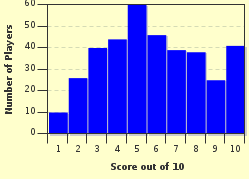Quiz Answer Key and Fun Facts
1. Where and when was Martin Luther born?
2. Where did Martin Luther receive his bachelor's and master's degrees in liberal arts in 1505?
3. What event took place in Luther's early life that made him decide to become a monk?
4. What was the name of the friar who, in 1517, traveled through Germany selling special indulgences to benefit the construction of St. Peter's Cathedral in Rome, and in doing so, carried the idea of indulgences to new extremes?
5. On what date in 1517 did Martin Luther nail the Ninety-Five Theses to the door of the Wittenberg Castle Church?
6. What was the name of the German prince of Saxony, Luther's part of
Germany, who took interest in Luther's writings?
7. At what meeting in 1521 did Luther face the Holy Roman Emperor and stand up against both him and the Church of Rome?
8. What former nun became Luther's wife and the mother of his six children?
9. What kind of education was Luther in favor of for the public?
10. When and how did Martin Luther die?
Source: Author
Elfarcher78
This quiz was reviewed by FunTrivia editor
bloomsby before going online.
Any errors found in FunTrivia content are routinely corrected through our feedback system.

